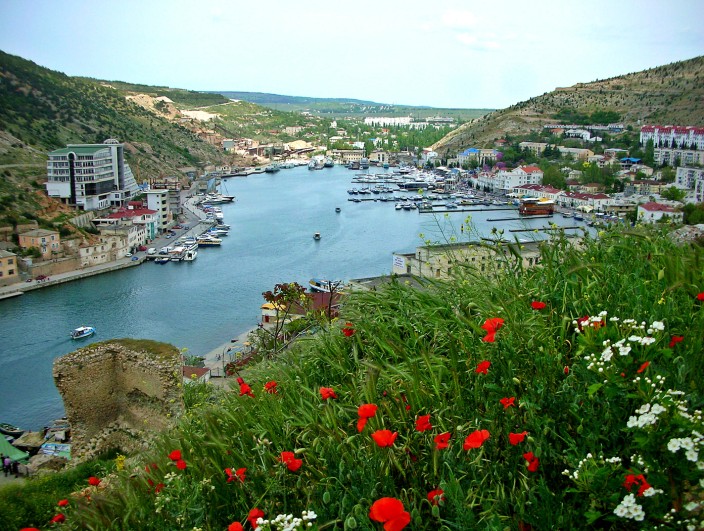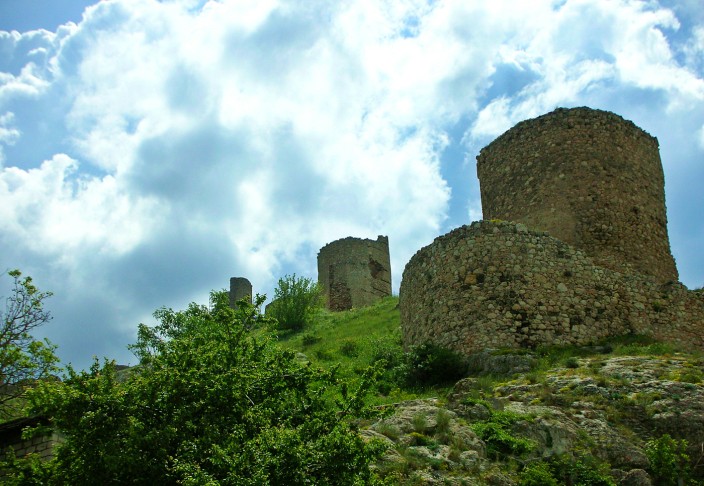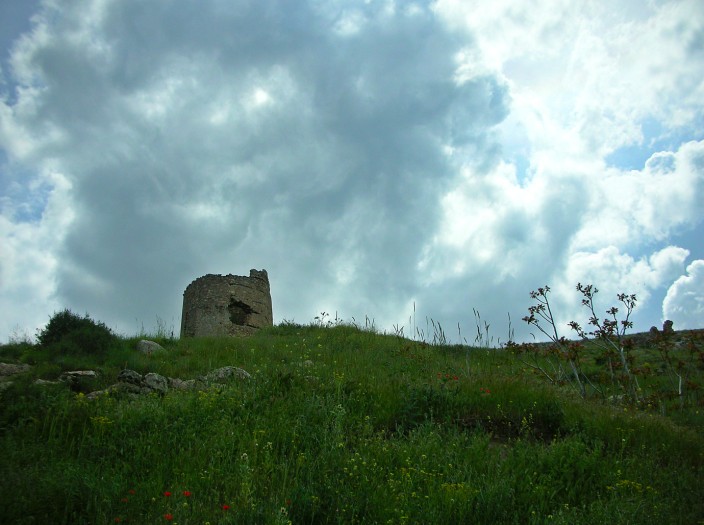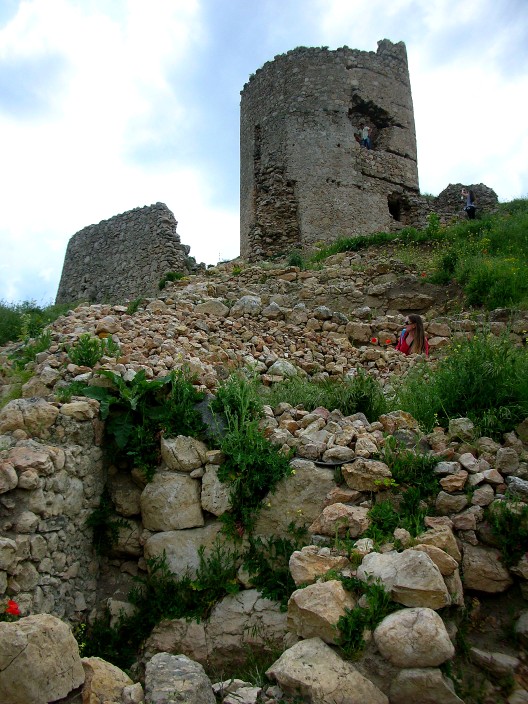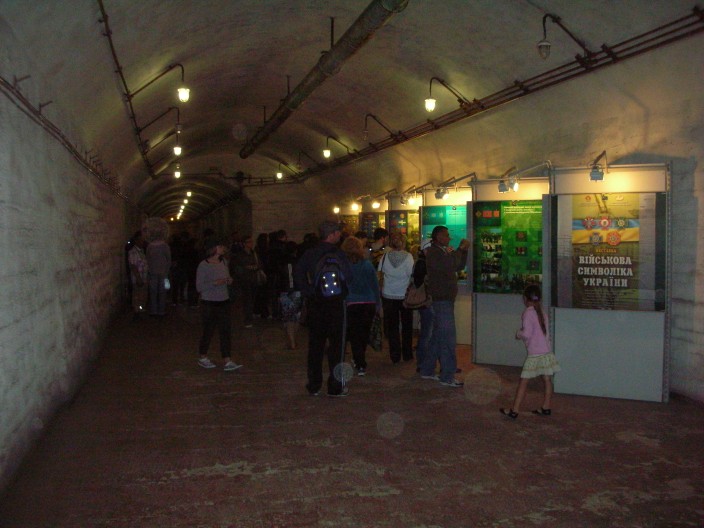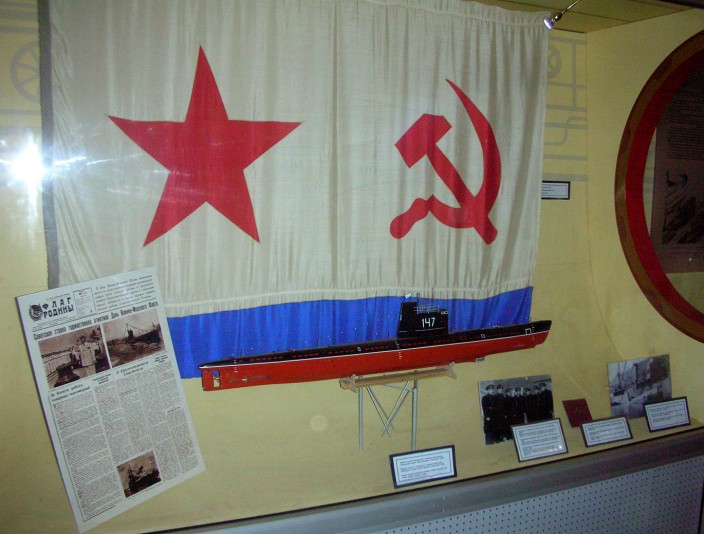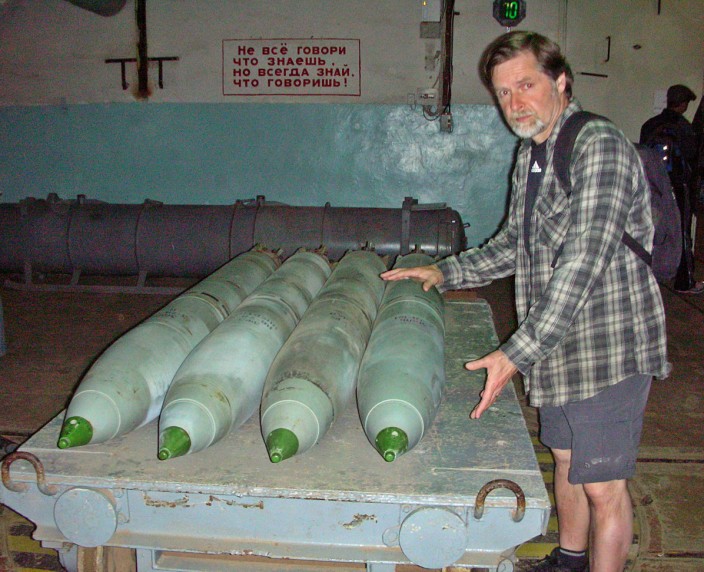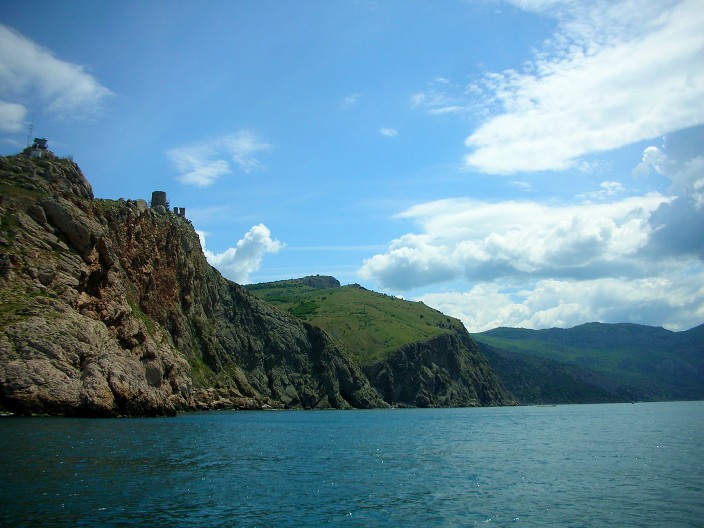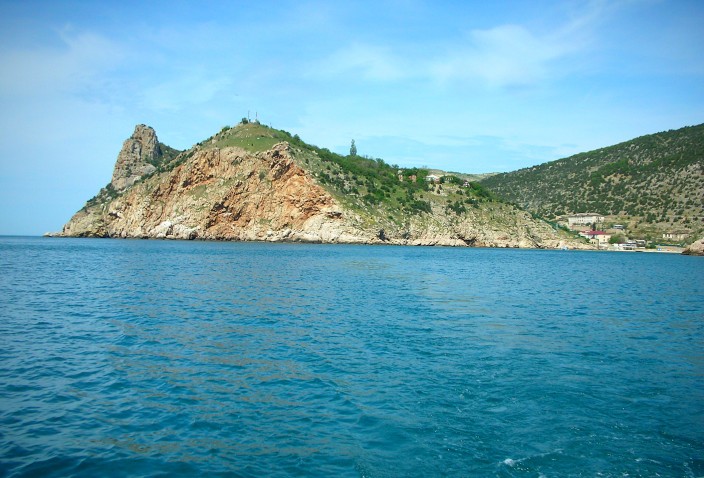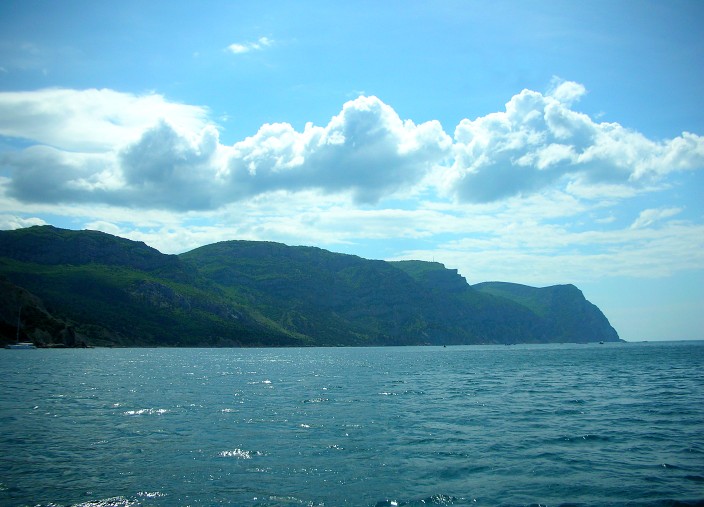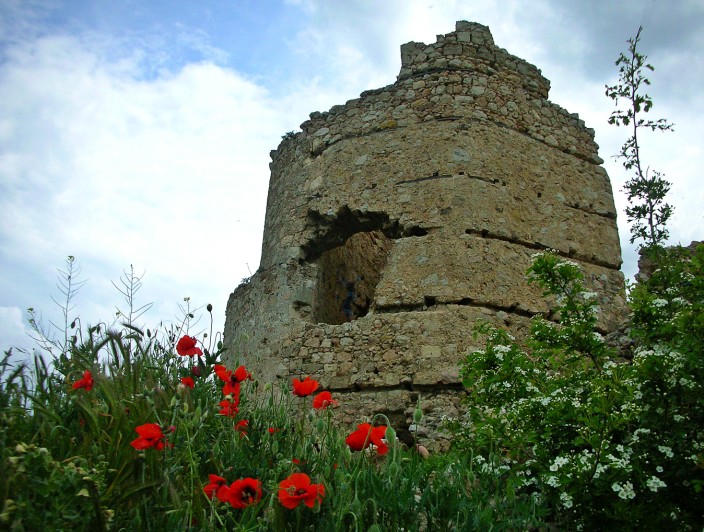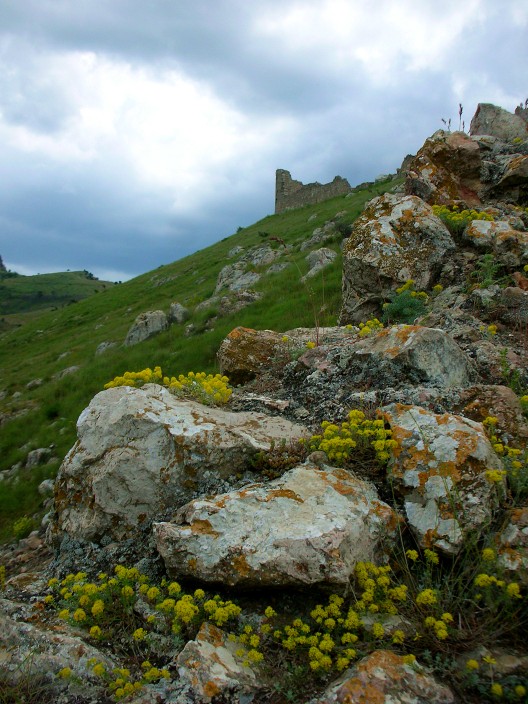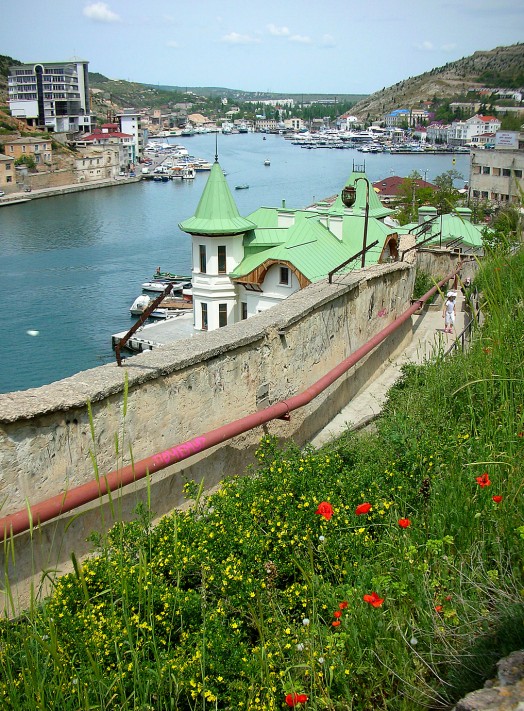(Balaklava and its harbor)
The town of Balaklava is found along the southern Crimea coast about thirty kilometers west of Yalta. Situated on an S-shaped, deep natural harbor protected on three sides by steep cliffs, Balaklava is thus blessed with easily defensible barriers and has been a hungrily sought after and fought over location throughout its long and bloody history.
(Ruins of Chembalo fortress)
That history began with a settlement established by the ancient Greeks called Symbolon, for whom it became an important commercial and trade hub. In the Middle Ages Balaklava was ruled by first the Byzantine Empire and then the Genoese, who called it Yamboli and Cymbalo, respectively. The city remained a vital seaport for the Genoese and it was during this time that some believe the Black Death arrived in Europe via trading ships which had passed through Balaklava on their way to Genoa from ports in the middle east and Africa.
By the late fifteenth century the burgeoning Ottoman Empire had taken over this part of the world, and then a couple centuries later – 1771 to be exact – the Russians gained control of Crimea during the Russo-Turkish War. Balaklava even received a visit from Catherine the Great in 1787.
(Chembalo ruins)
But the biggest claim to fame for this relatively small but historically significant town, at least in Western lore, is being the site of the infamous Charge of the Light Brigade during the Crimean War in October, 1854. It was on the heights just outside of town that the doomed cavalry charge of more than six hundred mounted British troops took place, mistakenly sent into the mouth of a valley toward an objective they had no chance of taking. In fact, the Russians were so astonished by the charge they thought the British must have been drunk. The brigade took withering fire from three sides from a combination of artillery and infantry rifles, resulting in a great slaughter of both men and horses. By battle’s end, less than 200 men remained together with their mounts.
(Chembalo fortress)
Strangely enough, when we visited Balaklava, we found scarcely a mention of all this famous history. What the town is most noted and remembered for nowadays, at least locally, is its most recent military significance, that of being the primary Soviet submarine base from World War II right through the end of the Soviet Union.
(Inside the submarine base)
The entire base is built beneath a mountain and touted as being virtually indestructible, even able to withstand a direct atomic hit. During this time, the town of Balaklava was one of the most secret and heavily guarded locations in all of the U.S.S.R., and was nearly impenetrable to outsiders without top secret clearance. Even family members of residents could not visit without good reason and rigidly scrutinized identification. Virtually the entire population of the town was employed either directly or indirectly with the submarine base and its operations.
(Naval museum inside sub base)
In 1993, two years after the collapse of the Soviet Union, the decommissioning process began, including the removal of warheads and low yield torpedoes. In 1996 the last Soviet submarine left the base. Today the old underground works are open for public tours, and we lined up with a whole lot of other folks to take it. I have to admit it was pretty cool, both literally (the temperature inside is a constantly chilly fifty degrees or so) and figuratively for me, a baby boomer and child of the Cold War, to find myself deep in the bowels of a place I could never have come anywhere close to only twenty years ago.
The tour was conducted by a man who I can only assume was ex-military. Though not dressed in uniform, he could have come straight out of Hollywood casting for hard-ass drill instructor type. His voice boomed and echoed through the cavernous concrete tunnels and hallways of the facility as he spoke in a very loud, rapid fire monotone, like a machine gun with an endless magazine. He barely ever paused for a breath. I, of course, didn’t understand him since it was all in Russian, but even my wife said she had a hard time following what he said as he spoke far too quickly. He’d no doubt said it all a few hundred times before and seemed quite bored and disinterested in the whole thing, as though he just wanted to get it over with as fast as possible and go have a beer.
(Can I take one home for a souvenir?)
But other than the surly tour guide, the place was fascinating for me. It was all very dark and dank as we walked along the canal system, saw the dry docks, and passed through narrow corridors and gigantic meter-thick steel doorways which could seal off different portions of the facility from each other or the outside. Deep inside the mountain, housed in the old ammunition depot, is a small naval museum.
(Black Sea coastline outside Balaklava harbor)
Back in the outside world, we then took a small boat tour of the harbor and nearby coastline. We putted away from the dock at a few knots, circling around the harbor where we could see the entrance to the submarine base and ogle the super-yachts and had a nice view of the crumbling remains of the old Genoese fortress Chembalo that dominates the hillside directly behind town. Then we headed out to open water, which I looked forward to for a couple of reasons. One, to get a different perspective, and two, so we would pick up speed and I could quit gagging on the exhaust fumes from our boat which swirled around and clung to us like poisonous vapors from hell. We were seated aft, right next to the engine and couldn’t really move very far away from it.
(Sunshine on the hills of Balaklava)
(A perfect day at sea)
Unfortunately, we never changed speed. We continued to dawdle up and down the coastline at trawling speed, barely making headway against the waves, which was fine for picture taking and sightseeing, but remained bad for breathing. Well, we made the best of it and at least the sun was out, the hills and coastline provided sparkling panoramas and the temperature was perfect. Soon we headed back the way we’d come and after docking we had about an hour to kill before our bus would head back to Yalta.
(Ruins on the hillside)
(Chembalo fortress)
I climbed the hillside of Chembalo fortress, inspected some of the ruins, and though I didn’t have time to make it all the way to the top of the hill I got some great photos and enjoyed the view.
(Balaklava)
Overall, Balaklava is yet another interesting and picturesque destination to take in and add to your Crimean intinerary in this land where fascinating history and spectacular natural beauty collide.
Coming Soon: Eski-Kermen Cave Town
